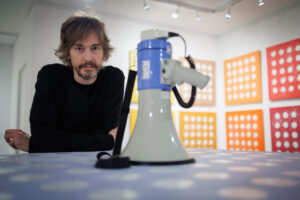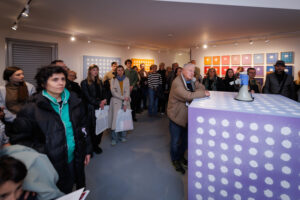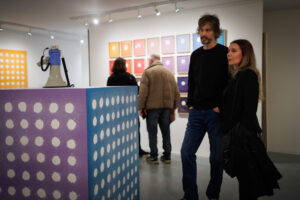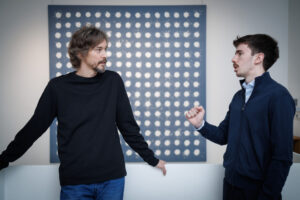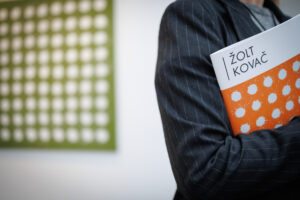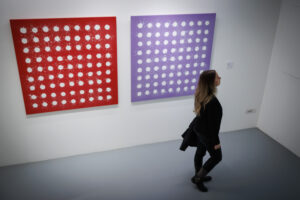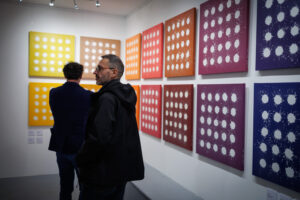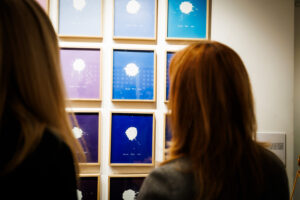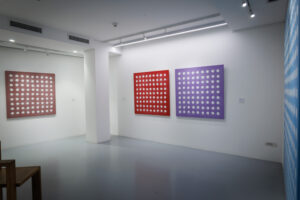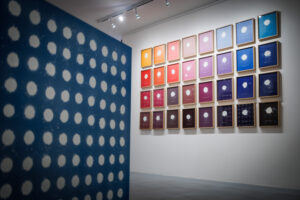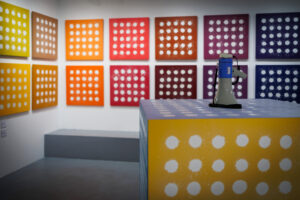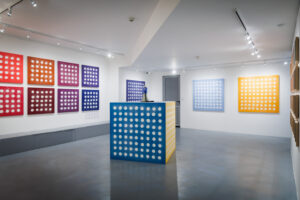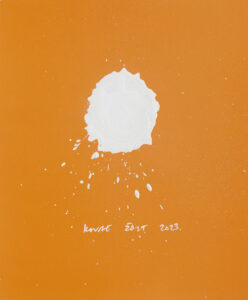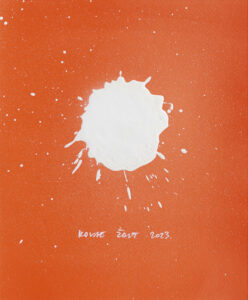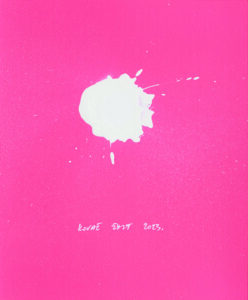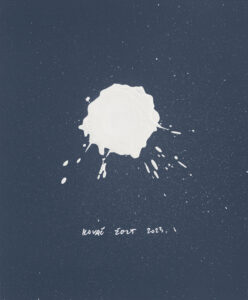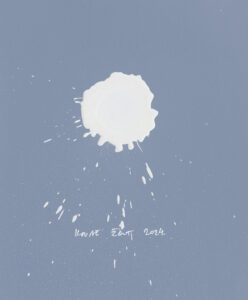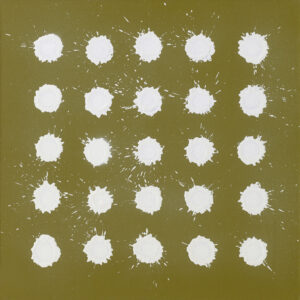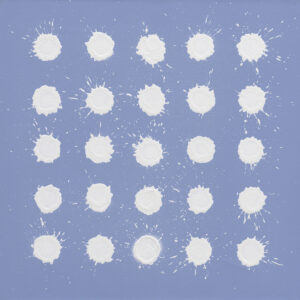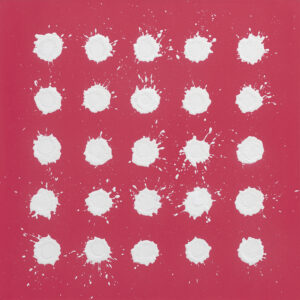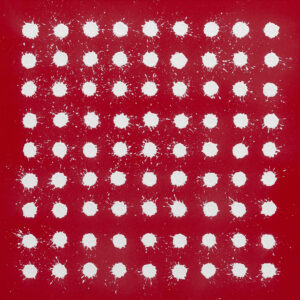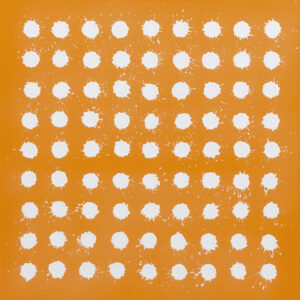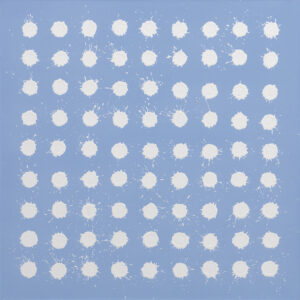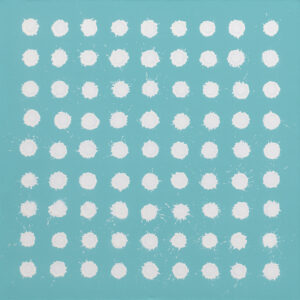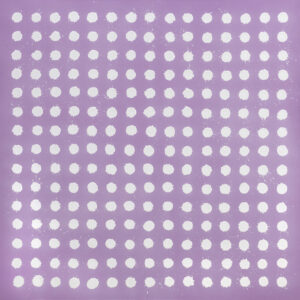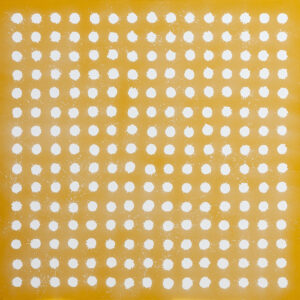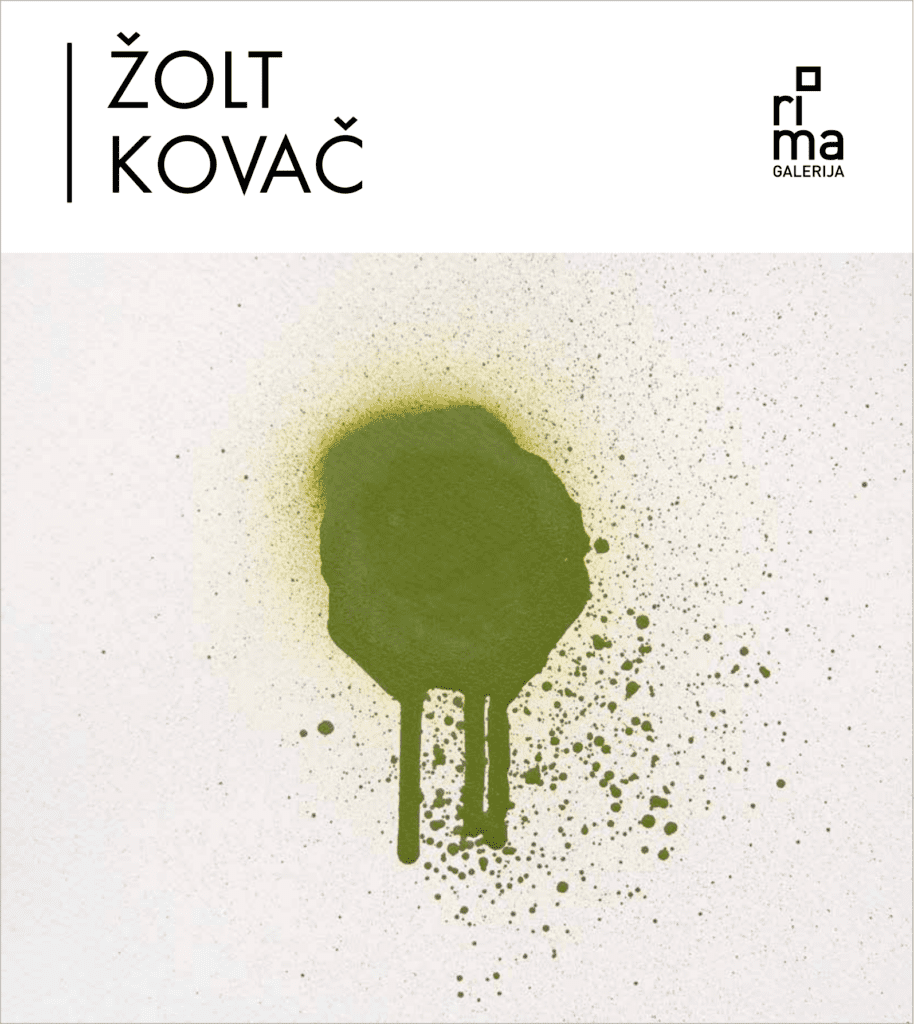3 April - 3 May 2025
Nevena Martinović
REGARDING THE SERIES OF STUPID MONOCHROMES AND THE END OF ŽOLT KOVAĆ’S CYCLE OF STUPID PAINTINGS
With the series of Stupid Paintings from 2008/2009 Žolt Kovač demystified his creative process in a humorous and unpretentious way, placing focus on the seemingly banal precondition of the state of “creative preoccupation“ where “we can spend many hours without even thinking that anything outside that micro-activity could exist.“
Namely, the first stupid paintings continued the series of Empty Time with which Kovač emphasised the necessity and meaning of “positive boredom“ – leisure understood as personal time devoid of everyday obligations, an endless flow of information and superfluous external stimuli. It is the time where an individual returns to the elementary postulates of his/her own existence without ambitions to be someone or something or even something else. This preoccupation delivered the first stupid paintings because stupidity, in absence of a more adequate expression, “is an important component of boredom“. For Kovač, the notion of “stupid“ has neither a positive nor a negative indication: it is only the closest qualitative definition of the state which awakens „empty time“, and where the artist is liberated not only from the contents but also from the history and inherited pregnant creative achievements and important theoretical discourses. When he talks about his early attempts to make a combination of colours that would be stupid, Kovač suggests that the key lies in the absence of any relationship between the juxtaposed nuances. One colour “must be neutral in relation to another. It should neither correspond not provoke“, but be “most indifferent towards the other.“ In other words, “stupid“ is the feeling of an empty space ready for the play and experiment, without compulsion or great expectations. So, stupid paintings are created on that fore-ground of the creative process where the artist, before he begins to shape the content and meaning, only enjoys the process of painting. When he mentions the experience related to stupid paintings Kovač suggests a generalised and unspecified positive state: “What is written in, is on the side of happiness, or, to express myself concretely and in such a banal way – on the side of positive feelings. With these paintings we can let ourselves experience a shock of good feeling while watching them, just because they are simple and full of colour. That would be all.“ Kovač retains this degree of positive banality stemming from the pure joy of painting as an elementary creative impetus and later on in his continuous series of works – The Return of the Stupid Paintings (2021/2022), Return of the Stupid Paintings Some More (2021/2022) and Children of the Stupid Paintings (2022/2023) – he renews, extends problematically and improves plastically his original concept. Finally, in his paintings from the last, fifth series, called Stupid Monochromes (2023-2025), presented for the first time in the Belgrade RIMA Gallery, the artist rounds off his cycle under the unifying title Stupid Paintings.
The previous interpretations of paintings from this cycle contain a repeated importance of the formal language of pure non-representational abstraction in the artist’s strategies for demystification of contemporary painting. Kovač chooses the territory that played the key role in the capturing of picture autonomy both in the development of its full potential as the medium of artistic expression we know today. By the end of the twentieth century painterly abstraction marked an important inflation of theoretical concepts, cultural roles and individual interpretations within the framework of limited plastic elements. After a blot had attained the full capacity of the content it represents, the twenty-first century abstraction experienced, in the words of Kovač, “a plunge into stupidity“. Numerous examples of abstract paintings with lucrative motivation, created to decorate the business and residential centres of small and big capital, hypocritically related their market values to the complex conceptual constructs historically woven into the field of abstraction. In that same way, Kovač chooses to unify in his simple morphology of stupid several components of emblematic value to the development of abstract painting: the blot as a semi-controlled mark related to the expressive potential of abstraction, the colour as the key bearer of symbolism and the catalyst of experience, but also the geometric patterns of “the grid“, representing rational and intellectual, but also optical fraction. Even the clear separation and transparency of the basic physical elements of the picture (the canvas, colour, format, trace of the spray) could be related to the conceptual, analytical line of abstract painting. Although he knows well all of their potentials Kovač informs the observer in the titles to use these elements only on the surface of their visual characteristics and refutes any content that could be interwoven beforehand or subsequently. With its reduced abstract morphology, the painting of Žolt Kovač has no pretentions to leave its basic visual elements, or to offer the observer more than an ocular enjoyment and a pleasant aesthetic relation. Moreover, in the last series of Stupid Monochromes the colour is separated from the blot and in that way the artist breaks the psychologically most potent connection within the painting, making it additionally “stupefying”. However, this time Kovač no longer takes only the intimate experience of stupidity as useful emptiness, but combines it with the socially conventional understanding of the same notion that pejoratively relates to insufficient value, knowledge and even consciousness. The artist assumes that this kind of “reading” lies in the sphere outside the picture, in the space of the viewer or a wider social context to which the picture inevitably belongs and where the artist chooses to make interventions with his works. Therefore, the meaning of stupid paintings does not lie in their (inexistent) content, but is of a relational nature and develops only through their performative role within the activity of their artistic and social fields. Like specific meta-objects, conscious of themselves and their positions, stupid monochromes take over the visual model of auto-referential painting close to minimal art and join the immense area of contemporary abstraction in order to break illusions about the dependence of contemporary painterly practice on new and great ideas, intellectual heights and emotional depths. The artist would say “that they name the things with their own names and prove the incompetence of contemporary painting.”
(Complete text in printed edition)
